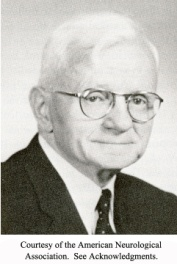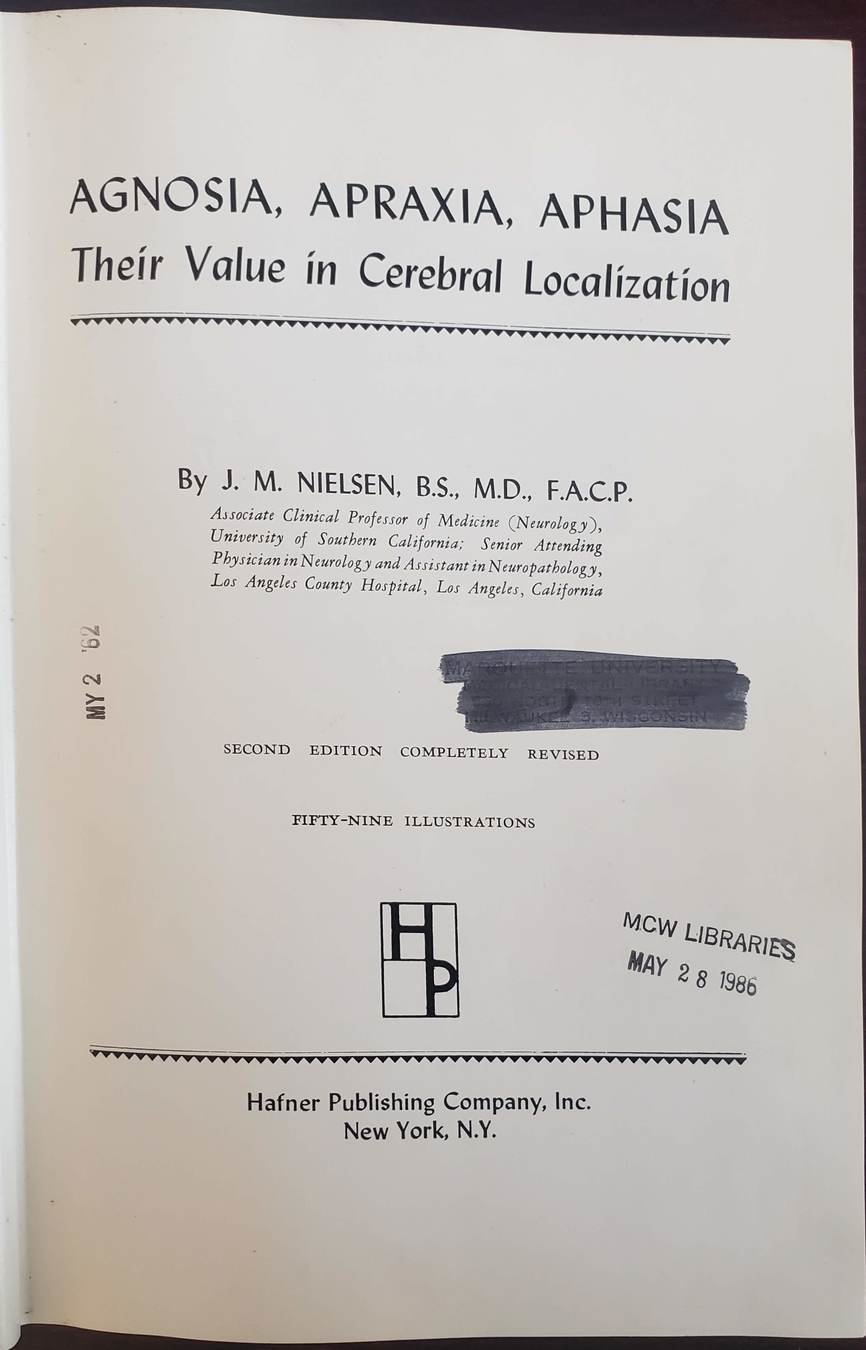The Cortical Representation of Body Part Concepts
Stephen Mazurchuk
10/27/21
A Case
Case
- 66 y/o man with severe Broca's aphasia
- MRI shows haemorrhagic infarcts in the left angular gyrus, posterior end of the left STG, and lateral part of the left frontal lobe
- On exam, alert and cooperative
- Comprehension of spoken speech was judged to be good
- Showed a consistent and striking inability to point to 'body parts'

Case
- 66 y/o man with severe Broca's aphasia
- MRI shows haemorrhagic infarcts in ithe left angular gyrus, posterior end of the left STG, and lateral part of the left frontal lobe
- On exam, alert and cooperative
- Comprehension of spoken speech was judged to be good
- Showed a consistent and striking inability to point to 'body parts'
Testing
Point to a named picture (either auditorily or visually) among 10 cards belonging to the same category
Case

Suzuki, K., Yamadori, A. & Fuji, T. Category-specific comprehension deficit restricted to body parts. Neurocase 3, 193–200 (1997)
Category Specific Semantic Deficits
- A brief history
- Experiential Models
- Decoding Analysis
- Encoding Analysis
- Closing Thoughts
Talk Outline
Earliest Reference
"These three cases then suggest that animate objects may be recognized and revisualized by the left occipital lobe while the same functions for inanimate objects proceed through functional activity of the right lobe"


* 2nd revised edition, 1940














- Many proposed category distinctions
- Artifacts, Animals, Tools, Plants/Food, Numerosity, Vehicles, Events, Human Traits
- Sometimes called "natural categories"
- Living/Non-living (Animals and Artifacts) is most widely studied dissociation
Key Point
Few fMRI studies have focused on determining the lexical-semantic neural correlates of body-part knowledge
Body part
Conceptual
Representations
(sometimes termed body-image)
Explain how focal Lesions to the cortex can result in deficits to a particular category of concepts
Goal:
Explain how focal Lesions to the cortex can result in deficits to a particular category of concepts
Goal:
Some areas of the cortex preferentially process certain sensory, motor, affective, and other experiential phenomena
"Natural categories" arise from having different loadings on sensory, motor, and affective dimensions
Conclusion:
1)
2)
"experiential features"
The spatial distribution and disruption of category knowledge is explained by "experiential" accounts of concept representation
Propositions:
(hypothesis)
both primary sensory cortices, but also adjacent association cortices
Explain how focal Lesions to the cortex can result in deficits to a particular category of concepts
Goal:
Some areas of the cortex preferentially process certain sensory, motor, affective, and other experiential phenomena
"Natural categories" arise from having different loadings on sensory, motor, and affective dimensions
Conclusion:
1)
2)
"experiential features"
The spatial distribution and disruption of category knowledge is explained by "experiential" accounts of concept representation
Propositions:
(hypothesis)
both primary sensory cortices, but also adjacent association cortices
Concept Loadings on Experiential Dimensions
Part I
Concept Representation as Experiential Attributes
CREA


- Participants are asked to rate on a likert scale how important they think a given attribute is to a given concept
Mean Ratings For Individual Categories
Clustering Analysis of Concepts based on experiential features




Do "Natural categories"* emerge from their ratings on different experiential features?
Question:
Yes No
* With a particular focus on the category of body-parts
Do "natural categories"* emerge from their loadings on different experiential features?
Question:
Yes No
Are there any parts of the cortex where activation patterns cluster based on "natural categories"*?
* With a particular focus on the category of body-parts
Part II
Decoding Analysis

Abdomen

Alligator

Ankle

Apathy

Apple

Armpit
Single Word fMRI Activation Patterns
Decoding Model
For a patch of cortex, train a linear Support Vector Machine (SVM) to classify a pattern as being a body part or not

Decoding
"If decoding succeeds on the test set, then the region must contain some information about the decoded variable"
Non-bodyparts
\(\psi_2\)
Body parts
\(\psi_1\)

Body Part Searchlight SVM




toggle
Do "natural categories"* emerge from their loadings on different experiential features?
Question:
Yes No
Are there any parts of the cortex where activation patterns cluster based on "natural categories"*?
* With a particular focus on the category of body-parts
Can experiential features predict the fMRI activation patterns in the above region?
Part III
Encoding Analysis
Explaining the Result
** Important **
The encoding model predicts the correlational structure between the activation patterns for body parts (test set) without having any body-part words in the training set
(Predict activation patterns for body-parts using observed activation patterns for other words)

Decoding
Body parts
Non-Body parts
\(\psi_1\)
\(\psi_2\)
Model
Words
Features
Encoding
Explaining the Result
Model
Words
Features
Encoding
For a given voxel
For word \(i\)

| Car | Airplane | Chicken | |
|---|---|---|---|
| Car | 1 | .62 | .1 |
| Airplane | 1 | .12 | |
| Chicken | 1 |
| Car | Airplane | Chicken | |
|---|---|---|---|
| Car | 1 | .42 | .06 |
| Airplane | 1 | .31 | |
| Chicken | 1 |
Predicted Correlational Structure
Observed Correlational Structure
predicted voxel response
feature \(1\) rating for word \(i\)
Result

CREA encoding model

Body part ROI
Encoding Model ROI
Do "natural categories"* emerge from their loadings on different experiential features?
Question:
Yes No
Are there any parts of the cortex where representations cluster based on "natural categories"* ?
* With a particular focus on the category of body-parts
Can experiential features predict the fMRI activation patterns in the above region?
Previous Literature
Bodypart assessment
- Developed two tests to assess the lexical-semantic representation of body
- point to body part most similar in function to target body part
- point to body part most closely associate with a pictures item (clothing / tool)

Schwoebel, J. & Coslett, H. B. Evidence for Multiple, Distinct Representations of the Human Body. J Cognitive Neurosci 17, 543–553 (2005)
Finding
All three subjects with body image lesions had suffered temporal lesions; as shown in Figure 2, the lesion involved portions of Brodmann's area 37 as well as underlying white matter in 2 subjects

BA 37
Peak BP Area
Closing Thoughts
Closing Thoughts
- Indication that left pMTG might play an important role in lexical-semantic representations of body parts
- Evidence that experiential accounts explain fMRI activation patterns
Future Directions
- Determine the experiential features most important for explaining the neural data
- Repeat similar analysis for other categories
- Examine the less significant ROI's for the body-part category
Thank You!
Questions?
EXTRA SLIDES





BUT ...
- The regressors from our model are Co-linear
- We have a lot of regressors
Shrinkage!
Ridge Regression
regular least squares
penalization
Need to choose the strength of the regularization parameter (\(\lambda \))
Shrinkage
An important concept in shrinkage is the "effective" degrees of freedom associated with a set of parameters.


Plan: Do PCA to estimate intrinsic dimensionality. Then estimate shrinkage parameter
Shrinkage
W2V Shrinkage


Extra:
- Similar question to doing RSA overall.
- The multivariate second moment of the activity profiles fully defines the representational geometry and with it all the information that can nbe linearly or nonlinearly decoded
- If the the noise is assumed gaussian, than the second moment also determines SNR
- It doesn't depend on getting single neurons right, but rather, capturing the population code
Why do RSA with the encoding model?
What about the areas outside of the ROI?
- Needs further investigation. We already know that our model correlates well with the shared variance in this region, but encoding is a different task
- Could be that voxel-wise encoding models are not sensitive enough
- Might need more subjects
- Might be different performance with different word sets

RSA performance of different semantic models in the General Semantic Network (under review)*
Fernandino, L., Conant, L. L., Humphries, C. J. & Binder, J. R. Decoding the Information Structure Underlying the Neural Representation of Concepts. Biorxiv 2021.03.16.435524 (2021) doi:10.1101/2021.03.16.435524.
Case
- 64 y/o man, gradual onset of a right hemiparesis
- Alert cooperative man, fully oriented for place and person, but mildly disoriented for time.
- Agraphia, but no reading deficit.
Called Autotopagnosia
- Could not point to named body parts (on himself or manikin)
- No errors in naming body part pointed to by the examiner
- The patient was amazed by this discrepancy.
- Was able to describe function of body parts
- Conversational speech was fluent and appropriate

Renzi, E. D. & Scotti, G. Autotopagnosia: Fiction or Reality?: Report of a Case. Arch Neurol-chicago 23, 221–227 (1970)
Part IV
ROI Specificity
Is the classification accuracy the same for all categories in the body-part ROI?







Animal
Artifact
Body part
Human Trait
Plant\Food
Quantity


























- As compared to Animals and Artifacts, body parts appear to have a somewhat specific representation
Summary
Do "natural categories"* emerge from their loadings on different experiential features?
Question:
Yes No
Are there any parts of the cortex where "natural categories"* emerge from the fMRI activation patterns?
* With a particular focus on the category of body-parts
Can experiential features predict the fMRI activation patterns in the above region?
While the above region is sensitive to the body-part distinction, is this region specific to body-parts?
Is there clinical/previous evidence to corroborate these results?
Clinical Correlates
Part VI
Deeper Neuropsychological Investigation
- Battery of 12 tests assessing lexical and conceptual aspects of body part knowledge to 104 brain-damaged patients
- Main finding was remarkably intact semantic understanding
- One notable patient with damage to left Extrastriata Body Area and had naming deficit restricted to body parts
A total of 4 of the 9 left hemisphere patients had disproportionately worse naming of body parts than naming of other categories of concrete entities


Previous fMRI Result
- 16 subjects, 4 semantic categories
- Task was within group similarity comparison
- Found body and clothing activated BA 37


Do "natural categories"* emerge from their loadings on different experiential features?
Question:
Yes No
Are there any parts of the cortex where "natural categories"* emerge from the fMRI activation patterns?
* With a particular focus on the category of body-parts
Can experiential features predict the fMRI activation patterns in the above region?
While the above region is sensitive to the body-part distinction, is this region specific to body-parts?
Is there clinical/previous evidence to corroborate these results?


